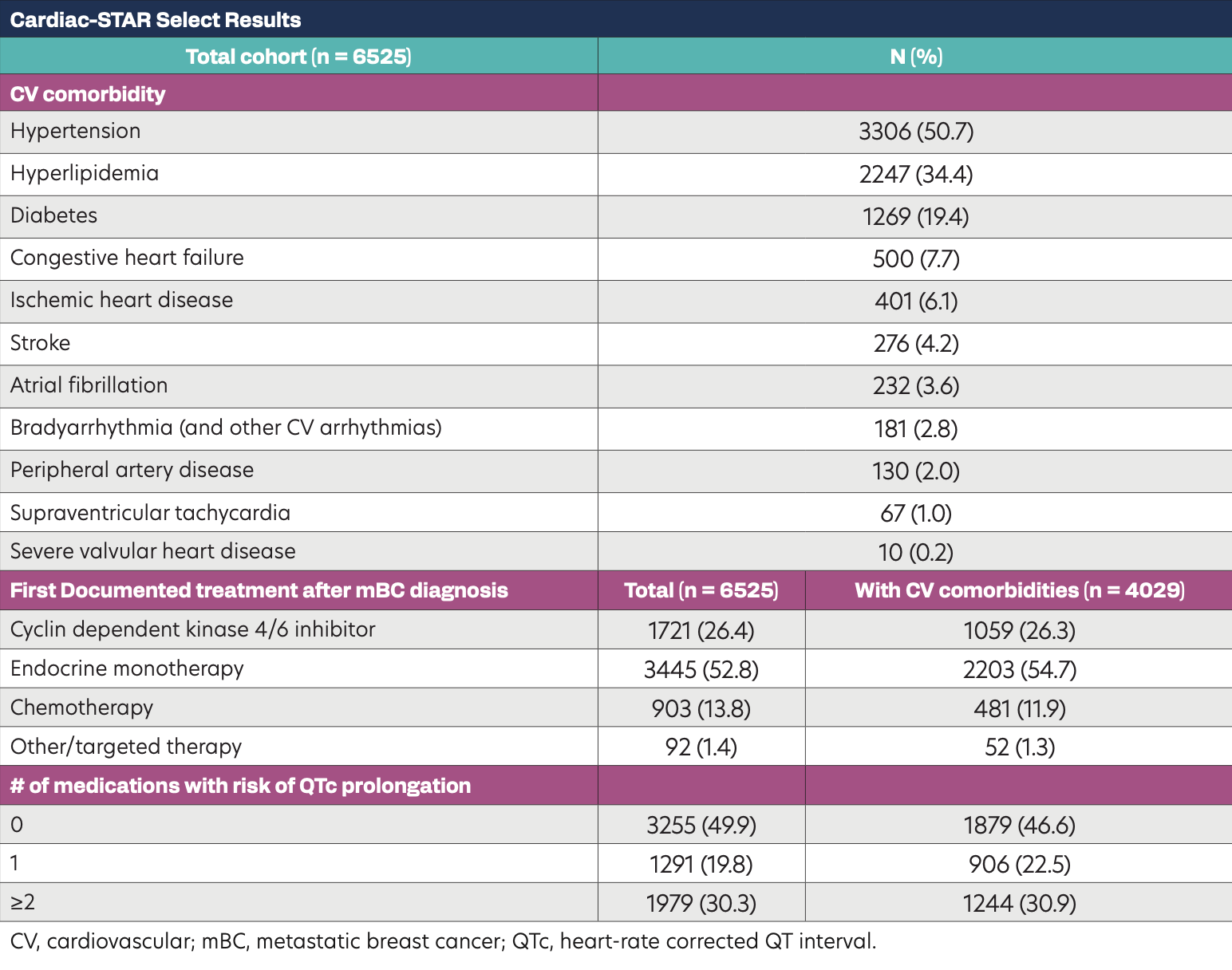27 CARDIAC-STAR: Prevalence of Cardiovascular (CV) Comorbidities in Hormone Receptor–Positive/ Human Epidermal Growth Factor Receptor 2–Negative (HR+/HER2–) Metastatic Breast Cancer (mBC)
Background
The prevalence of preexisting cardiovascular (CV) comorbidities at diagnosis of hormone receptor-positive (HR+)/HER2-negative (HER2–) metastatic breast cancer (mBC) has not been well established. We aimed to describe the prevalence of preexisting CV comorbidities in patients with newly diagnosed HR+/HER2– mBC and to describe the first documented cancer treatment and concurrent medications with risk of QT interval (QTc) prolongation for patients with or without CV comorbidities.
Methods
Women and men 18 years or older with newly diagnosed HR+/HER2– mBC from January 2016 to December 2022 were included in this retrospective, observational study using Merative™ MarketScan® commercial and Medicare databases, which is nationally representative. Evidence of metastatic breast cancer, based on published claims-based algorithms, was defined as having at least 2 claims containing at least 1 diagnosis code for breast cancer at least 30 days apart and at least 2 secondary malignancy diagnosis codes. The index date was defined as the date of first mBC claim. Patients had a 1-year preindex period for observation of CV comorbidities and concurrent medications with the risk of QTc prolongation and a 6-month postindex period for the first documented cancer treatment.
Results
Cardiac-STAR Select Results

We identified 6525 patients with HR+/HER2– mBC, 99% female, median age of 59 years, and 84% had an employer health plan. At diagnosis, 4029 patients (61.7%) had 1 or more preexisting CV comorbidities. The most commonly reported CV comorbidities were hypertension (50.7%), hyperlipidemia (34.4%), and diabetes (19.4%). The median ages of patients with or without CV comorbidities were 62 and 53 years, respectively.
Conclusion
CV comorbidities in patients with HR+/HER2– mBC are often underrecognized. Here, more than 50% of patients had 1 or more CV comorbidities by metastatic breast cancer diagnosis. CV comorbidities may impact treatment decisions in the HR+/HER2metastatic breast cancer population, particularly in patients who
are older.
